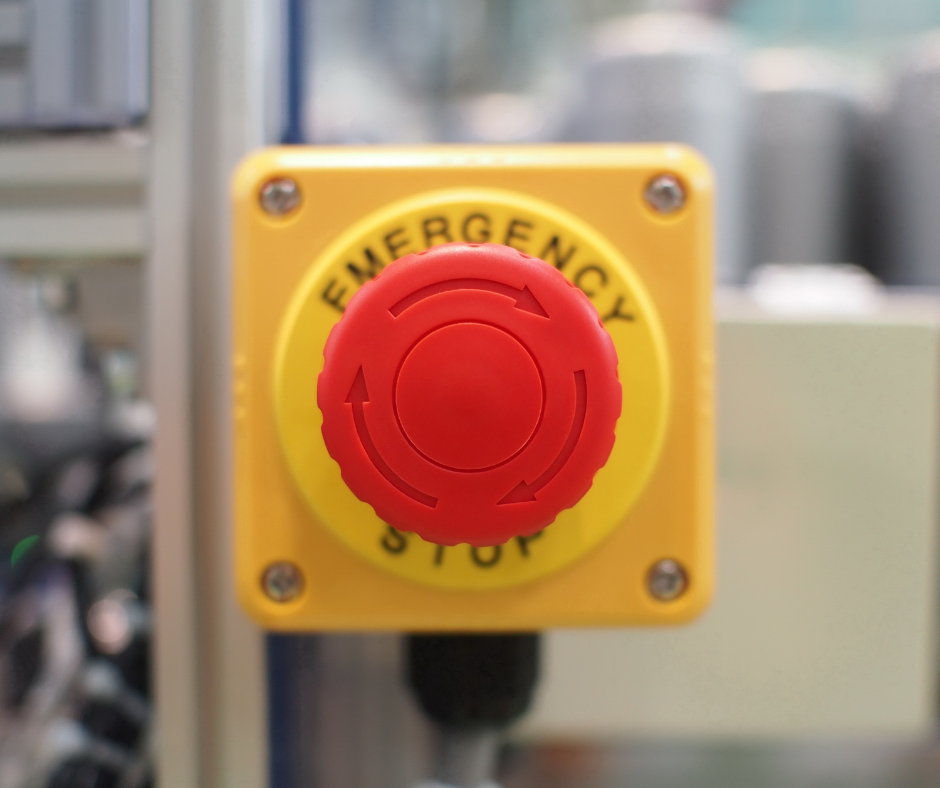Very recently I was overseeing the implementation of a new automated guillotine to a client factory. The focus of almost everyone present was on how the equipment use would interact most efficiently with other operations and processes taking place in the working area. Of course this is an important aspect to consider, especially in terms of protecting pedestrian and plant movement routes, but I noted that thoughts on the equipment’s direct hazards were not the primary thought at the time.
What To Consider When Implementing New Fixed Equipment
 An easily overlooked aspect of implementing new fixed equipment is consideration of its inherent mechanical hazards.
An easily overlooked aspect of implementing new fixed equipment is consideration of its inherent mechanical hazards.
Like with most things H&S there is a set list of items to be aware of when conducting mechanical hazard assessments, and ideally even prior to this dependant on where your purchased equipment may be coming from. These are:
- Crushing – Where parts of machinery move together, or a singular object pushes towards a stationery one creating a crush point.
- Shearing – Where parts of machinery move past each other or past a stationery part to create a cutting/crushing point.
- Cutting or Severing – Where moving parts of machinery fitting the above criteria have the potential to cut or sever body parts.
- Drawing in or trapping – Moving machinery parts that clothing or body parts can be caught in moving parts and drawing into equipment mechanisms.
- Entanglement – Similar to drawing in, where moving machinery parts can pull a person into its moving parts.
- Impact & ejection – Where fast moving machinery can strike or eject material towards a person in its zones of movement.
- Stabbing or punctures – Sharp corners & points of machinery either stationery or moving can cause injury.
- Friction or abrasion – Rough and or moving surfaces that if contacted can remove or burn skin.
- High pressure fluid injection – Machinery related fluid release that results in injection under the skin following a stab or puncture that can result in major injury and potentially amputation.
- Mobile machinery – Impact and trapping risks from person operated moving plant.
Not all these hazards will be inherent to all equipment, but awareness of them is an important aspect of assessing new equipment to be implemented to a workplace.
Are Safety Features in Equipment Sufficient?
 The biggest issue I personally have faced over the years when assessing mechanical hazards is the notion that due to manufacturer and supplier regulations in place, safety features inherent to most equipment will counter the above noted hazards as part of its design.
The biggest issue I personally have faced over the years when assessing mechanical hazards is the notion that due to manufacturer and supplier regulations in place, safety features inherent to most equipment will counter the above noted hazards as part of its design.
Despite the law being clear in this matter, this is not always the case, especially when equipment is purchased from countries with, shall we say, lower standards than we expect in the UK.
There is also the potential that older equipment for purchase second-hand may not have all the mod cons that are currently industry practice to counter the above stated hazards. Another point of note is ensuring that equipment is going to be suitable for what you intend to use it for.
Ideally, all these factors should be taken into account when considering new equipment for purchase before the fact. Ensure equipment being purchased has the design and engineering controls built in that will counter the hazards above and then work with site specific controls following this. These can include but are not limited to:
- Fixed guarding
- Adjustable guarding
- Interlocking and trip guarding
- Physical barriers
- Designated safe operator and danger zones
- Emergency stop buttons
- Deflectors or skirting
- Overpressure protection systems
- Equipment isolation systems
 If equipment being considered does not have all the controls you would expect, or has already been purchased, whilst not ideal this does not mean a solution cannot be found.
If equipment being considered does not have all the controls you would expect, or has already been purchased, whilst not ideal this does not mean a solution cannot be found.
WA Management have collaborated with several clients and suppliers of bespoke control mechanisms over our many years to counter these issues. With all things in the world of health and safety however, prevention is always preferable to a cure.
So the next time you are considering purchasing new machinery or equipment, please let us know and we can assist in making the best choice to avoid potential issues and expenditure later down the line.
Written by James Ross, Senior SHEQ Consultant at WA Management.

Don’t miss out! Our Abrasive Wheels, Hand Arm Vibration, and Noise at Work course training offer is only valid until the end of the day tomorrow! Get 10% off these online training courses with the code ‘equip10’ at checkout.
Read more Consultant’s blogs here.
To keep up to date with the latest health & safety news and advice, follow us on social media:
